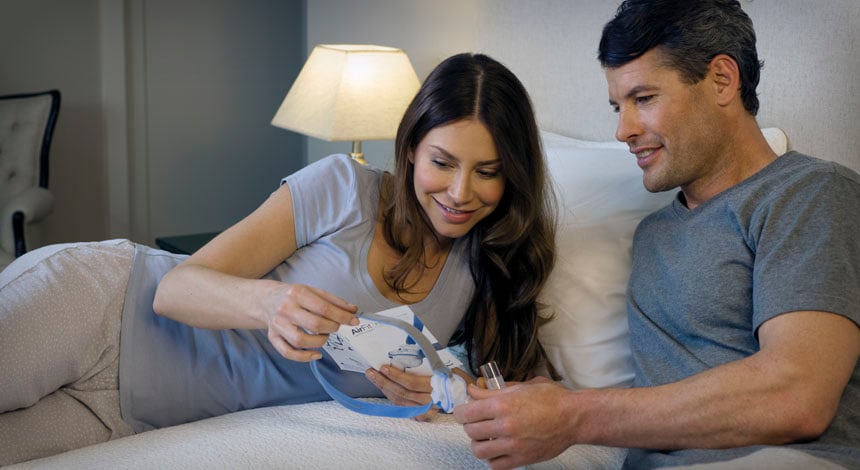Show me the way to...
txt
Show me the way to...

ResMed masks come in a variety of styles and sizes to suit the needs of many patients. How can you choose a mask that best fits your needs? Find the answer below.
A. It's important to choose a mask that's comfortable, otherwise you may not use it regularly. Although you'll be guided through this process by your ResMed accredited outlet, ResMed recommends trying on as many masks as you can or talking to other users.
A. A nasal pillows mask rests at the entrance of your nostrils, a nasal mask covers the nose and a full face mask covers the nose and mouth.
The mask type that best suits you depends greatly on personal needs and preferences. Some things that you may want to take into consideration are your facial anatomy, facial hair, whether or not you're claustrophobic, etc. Each mask has its own benefits, and you should discuss these with your ResMed accredited outlet so you can try on various mask styles and decide which is best for you.
A. Yes. You should remember, though, that every mask has slightly different characteristics, so if you're using a device, you'll need to change the mask setting on the user menu when you switch mask types.
A. Probably - but if you're using a non-ResMed APAP or CPAP device, you may want to check with a ResMed accredited outlet or your doctor to ensure it doesn't compromise your sleep apnea therapy. Do you have a question about finding the right mask that isn't on this page? Contact our customer support, click here to submit an online inquiry.
How can you achieve mask comfort, and what can you do if you're experiencing mask discomfort? ...
How often should you clean your mask? No matter what type of mask you use, regular cleaning is ...
Properly fitting your mask is an essential part of therapy. Check out our answers to your most ...
How often should you replace your mask? Can you buy individual replacement components? Find the ...
©2000-2019 ResMed. All rights reserved.